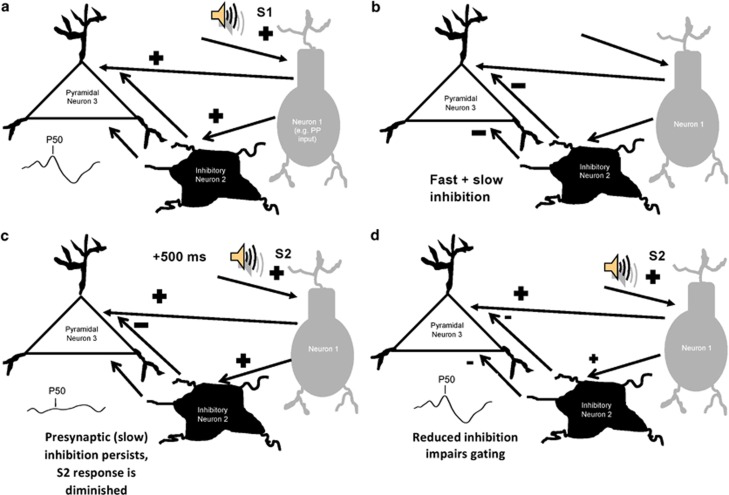Figure 2.
Cartoon schematic of the hypothesized neuronal circuit responsible for sensory gating and its deficits in schizophrenia. Waveform positive polarity is upwards. (a) In a healthy subject, a sound stimulus excites Neuron 1 (for example, the perforant path (PP) input to the hippocampus), which in turn excites hippocampal pyramidal Neuron 3. Neuron 1 also excites inhibitory Neuron 2. (b) Neuron 2 reduces glutamate release by Neuron 1 via activation of presynaptic GABA-B receptors (slow inhibition) as well as inhibits Neuron 3 via activation of postsynaptic GABA-A receptors (fast inhibition). (c) Step 3: a second sound stimulus arrives 500 ms later and excites Neuron 1. Unlike the previous stimulus, Neuron 1 cannot excite Neuron 3 owing to persistent (slow) inhibition from Neuron 2. Signal from the second stimulus is, therefore, reduced or ‘gated.' (d) In a patient with schizophrenia, gating deficits may arise from reduced GABAergic signaling caused by dysfunction of Neuron 2.

